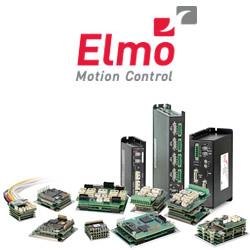RIVELIN ROBOTICS REFLECTS ON PHENOMENAL FORMNEXT
Across all four days of the additive manufacturing (AM) industry’s largest exhibition, the Rivelin Robotics stand was inundated with enquiries and requests for demonstrations of the NetShape Robot (NS-0) that was on show.
(Sheffield, UK. 28th November, 2022) Formnext 2022 was Rivelin Robotics' first trade show and, just, WOW! The team are decompressing after a very intense week in Frankfurt last week, which saw them launch their NetShape Robots to the industry. The response was - and continues to be - immense from the industry, from potential investors and, most importantly, from our existing and potentially new customers. Across all four days of the additive manufacturing (AM) industry's largest exhibition, the Rivelin Robotics stand was inundated with enquiries and requests for demonstrations of the NetShape Robot (NS-0) that was on show.
As a winner of the Formnext Start Up Challenge, Rivelin Robotics was afforded opportunities to share the launch of NetShape Robots on a couple of stages during Formnext, including the PitchNext event. This obviously contributed to the busy-ness of the Rivelin Robotics stand, but the innovative robot cell, powered by Rivelin's software was the main draw.
"When Rivelin was founded, it was with huge conviction that we could solve one of the most difficult challenges of producing metal parts using AM - specifically the bottleneck in the workflow that happens once the part(s) come off the machine. This conviction was born from my own frustrations working with metal AM," says Robert Bush, Founder and CEO of Rivelin Robotics.
Across the industry, a great deal of work (investment, time, R&D) has gone into developing and evolving AM processes that build high quality parts. However, once the parts come out of the machine the labour, skills, and time involved in removing supports and finishing them to the required level is expensive, intensive, and not without risk of injury. This can often negate the advantages of using metal AM processes for a given application in the first place.
NetShape Robots (formally launched at Formnext 2022) have been developed and commercialised to eliminate these issues for manufacturers with a reliable, repeatable, safe, and automated solution, According to Bush, "Formnext was phenomenal for us, and showed us that we are definitely on the right track. We were able to meet with our existing customers who are genuinely excited about how we can support them. But what really took me by surprise was the number of enquiries we had from so many different industry sectors all seriously looking for post processing solutions for metal parts, most notably the mold & die and food packaging industries."
Bush also noted how the majority of enquiries came from highly qualified leads, with specific applications of metal AM who were looking for a full demo and wanted intricate cost breakdowns, not just a ball park figure. Other enquiries came from companies experiencing post processing problems and which were looking around for solutions. Surprisingly, the minority group of visitors to the stand were those looking to understand more about post processing in general and looking to be educated.
Rivelin Robotics is offering a pragmatic solution to real problems that manufacturers face for production applications of metal AM. The team will be following up over the next weeks and is excited for 2023.
About Rivelin Robotics
For OEM's and their supply chain who are dissatisfied with how labour-intensive metal additive manufacturing is, Rivelin NetShape is an automation solution for support removal and targeted finishing that supports high-mix production lines in mission-critical industries. Unlike automation found in casting, NetShape doesn't need pre-defined toolpaths or specialist robot programmers.
Featured Product

